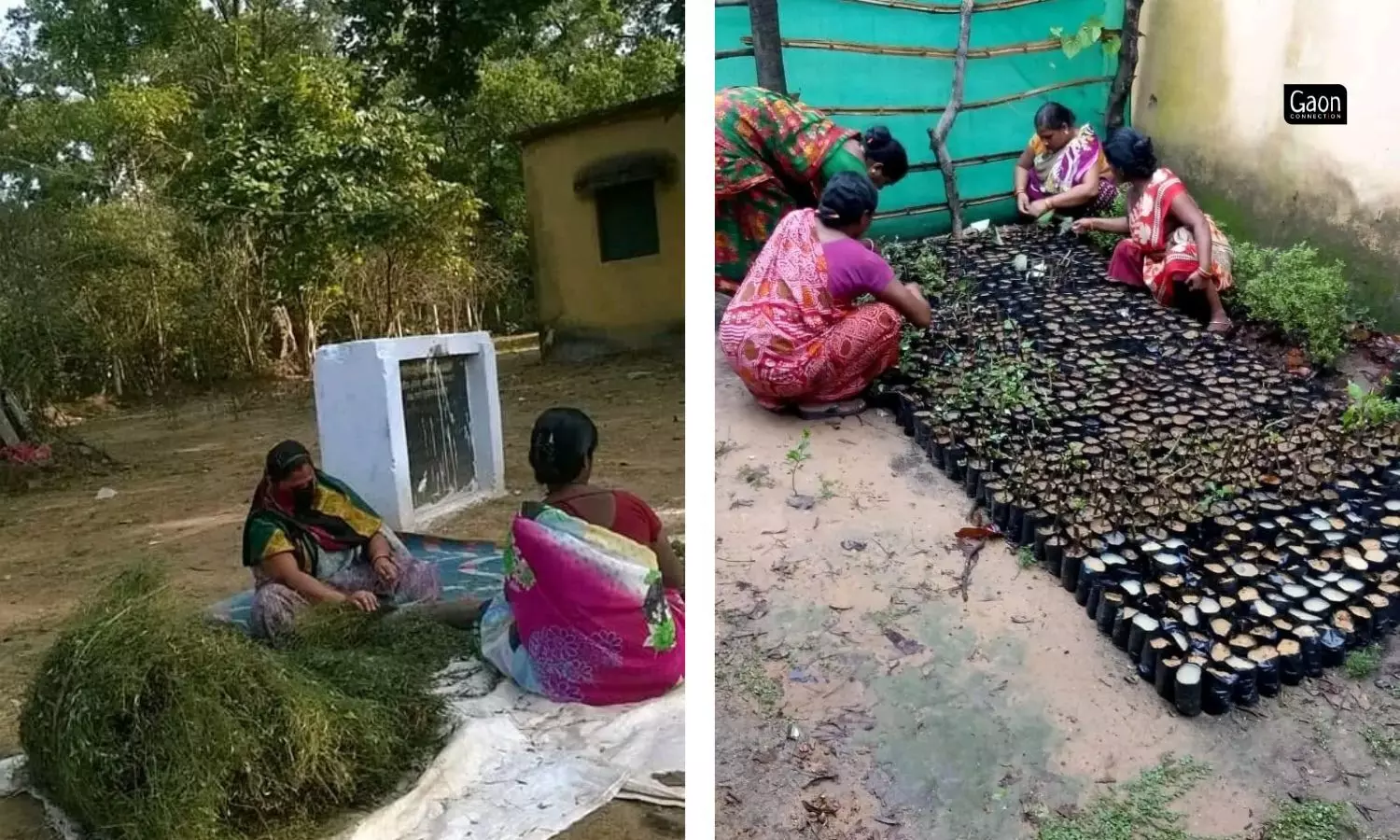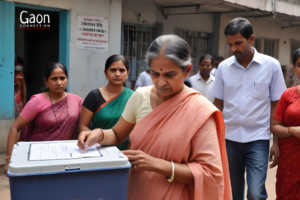Jamshedpur, Jharkhand
Sarojini Goyal Panika wore her tribal identity proudly, in her traditional sari, jewellery and feathered headdress, as she took her seat along with more than 150 tribal healers who had gathered in Jamshedpur, between November 15 and November 20.
The annual tribal conclave, Samvaad, was organised by Tata Steel Foundation, and one of its key aims was to document, preserve and provide a platform to learn about, ideate on and safeguard tribal wisdom of which traditional healing practices are a big part.
Sarojini comes from a family of traditional healers from the Panika tribal community in Chhattisgarh. She grew up watching her grandfather and father dispense medicines they made with herbs and leaves, berries and roots they foraged from the forests.
Her grandfather was a village vaidya or healer in Bicharpur, Anupur district. She recalls going into the forests with him and later with her father to forage for medicinal leaves, roots and shoots, which helped cure several illnesses.
Deeply influenced by that, she decided to follow in their footsteps and do something to safeguard and take forward the wealth of healing wisdom that she feared would otherwise disappear.
In 2013, Sarojini set up a manufacturing unit called Nishtha Herbal in Dondro village in Korba district in Chhattisgarh where she makes healing brews, powders, oils, tablets and even laddoos. More than 200 women are associated with it directly or indirectly.
Also Read: A Road Map for Traditional Healers
She got approximately an acre of land and some financial support from the Forest Division, Korba, to start her manufacturing unit.
“We make about 25 different products from medicinal herbs. So far we have trained more than 400 women. While 15 women work in the unit, some go into the forests and gather the medicinal plants, then there are others who work from their own homes, cleaning, sorting, pounding etc., after which they bring the herbs to the unit where we process them into different products,” she explained.
According to her, Nishtha Herbal unit has an annual turnover of 50 lakh rupees.
But before she set up the manufacturing unit, Sarojini was trained to become a village botanist.
“In 2010, I was selected by the United Nations Development Programme for a year-long course in Bengaluru. There I learnt the botanical names of many of the medicinal plants I knew only by their local names. I also learnt about sustainable harvesting,” she said. Sarojini also takes school children into treks inside the forest to introduce them to some of the medicinal herbs that still grow there.
The year-long course was held at the University of Trans-Disciplinary Health Sciences and Technology. It was an opportunity for her to also learn more about the Biological Diversity Act, 2002, and the key role traditional healers like her could play.
The Act stipulates that every local body in the State shall constitute a Biodiversity Management Committee within its area of jurisdiction for the purpose of promoting conservation, sustainable use and documentation of biological diversity including preservation of habitats, conservation of land races, folk varieties & cultivars, domesticated stocks and breeds of animals and microorganisms and chronicling of knowledge relating to biological diversity.

These women make the medicines with herbs and leaves, berries and roots they foraged from the forests.
Sarojini is a member of the Biodiversity Management Committee in Korba district. She is also pursuing her higher studies and is in her final year of M.Sc Botany at Korba, and is planning to do her PhD as well.
She said that her mission was to ensure traditional healing practices do not disappear.
“In earlier times, every home had someone who knew about the healing powers of medicinal plants and herbs. My grandfather often treated people who had conditions such as jaundice, indigestion, skin disorders, fevers with the plants he collected that day from the forests near his home.”
Also Read: Tribal History Kept Alive Through Oraon Art
But now, she worried how so many medicinal plants she had foraged for in her childhood are becoming more and more difficult to get and are gradually disappearing.
So a significant task that Sarojini has undertaken is the planting of some red listed herbs. These include safed musli (C. Borivilianum), shatavari (Asparagus racemosus), kalmegh (Andrographis paniculata), gurmar (Gymnema sylvestre) and kachnar (Bauhinia variegata).
“We go into the forests, and bring saplings of these rare plants that are endangered and we plant them in the nursery. Once they grow, we use them in our products and also sell them to others who may want them,” she said.
“There is still so much to be done.” And according to her, Samvaad had given her an impetus to carry on in her chosen path.
“This is my eighth year at this conclave. It has given me a sense of identity and self confidence that I lacked before. This tribal outfit you see me wearing now, I started wearing this only after I came here and felt a sense of pride in myself and my tribal origins. I will be back again,” she smiled, as the peacock feather on her headdress bobbed proudly.


















